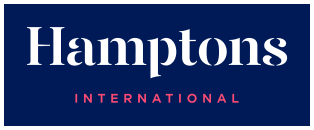The rental market recovery may peak in 2023
Category Rentals
The rental market outlook appears to be stable and potentially positive going into 2023. Samuel Seeff, chairman of the Seeff Property Group, says the market has shed most of the challenges of the two-year Covid crisis.
Demand for rentals could potentially increase further due to the interest rate hikes and cost of living challenges with rentals potentially seen as a more affordable alternative to buying. The economic impact of the higher interest rate will, however, likely keep rental escalation rates under pressure according to John Loos from FNB.
Speaking at a Seeff webinar on the property market outlook for 2023, Loos said further that the rental market may be peaking this year. This follows the systematic recovery after the two-year Covid decline and a return from negative to a positive growth rate.
A recent TPN Rental Barometer for example noted that rental growth recorded 3% for the third quarter of last year which outpaced GDP growth, but still falls well short of the CPI rate which, although down to 6.9% in January 2023, remains above the Reserve Bank’s target range of 3%-6%.
Loos notes that rental yields have remained below inflation, which may be one reason why the buy-to-let sector still only comprised around 6% of sales over the last year. He believes that only once the country returns to GDP growth of 3% to 4% will we again see inflation-beating rental yields and higher investment in the buy-to-let sector.
Nonetheless, TPN reports that the average monthly rental has broken the R8,000 per month ceiling and ended the third quarter at R8,023 on average compared to R7,800 in the first quarter of 2022. The national rental inflation was around 3%.
Regionally, the average rentals and rental inflation stands at:
Western Cape – R9,533 which is an increase of 2.9% year-on-year. The province remains the most expensive for tenants with an average rental of R1,500 above the national rental average.
Northern Cape – R8,721 which is a whopping 8.1% increase. This is the highest growth and the only province to top inflation. Concerningly, it is the second most expensive province for tenants.
KwaZulu-Natal – R8,537 which is an increase of 3.7% between 2021 and 2022, making it the third most expensive province for tenants in the country.
Gauteng – R8,235 which is only 1.8% up from the prior year. Notably, Gauteng remains the most affordable major metro in the country for tenants.
Mpumalanga – R7,897 which is 2.6% up on the previous year and makes it the most expensive inland province outside of Gauteng.
Limpopo – R7,354 which is an increase of 4.7% year-on-year, but is concerningly making the province more expensive for tenants.
Eastern Cape – R6,467 which is up by 4% year-on-year, but is still the third most affordable province in the country.
Free State – R6,281 which declined by 0.2% compared to the previous year and which means that it is now the second most affordable province in the country.
North West – R5,509 which is 4.8% higher than the prior year, but still makes the province the most affordable for tenants with the lowest average rent in the country.
Rental arrears continued to improve
Notably, the amount of tenants in arrears has declined to 18.3% which is the lowest level since the onset of the Covid pandemic. While this is a notable improvement and there has not yet been an impact from the higher interest rate and cost of living inflation, tenant payments may well come under pressure as the year progresses.
The biggest challenges with arrears are experienced in the Free State, North West and KZN provinces. In contrast, the best paying tenants appear to be in the Western Cape (only 14.7% arrears) followed by Gauteng (16.3%) and Mpumalanga (16.4%).
Supply and demand, and the effects to net migration
Supply and demand is the driving force behind the rental market and this in turn is affected by a range of economic indicators such as the interest rate, cost of living inflation, GDP and wage growth, but also factors such as population growth and migration patterns.
For the well-documented and argued reasons of good governance and a better quality lifestyle, the Western Cape continues to attract the highest volume of net inward migration (around 300,000 between 2016 and 2021) compared to Gauteng (65 683), the Eastern Cape (53 601) and then other locations (98 317).
Naturally, the impact of the migration and favourable sentiment in the Western Cape is felt in the residential sales and rentals market.
Author: Gina Meintjes




 Beyond your expectation
Beyond your expectation